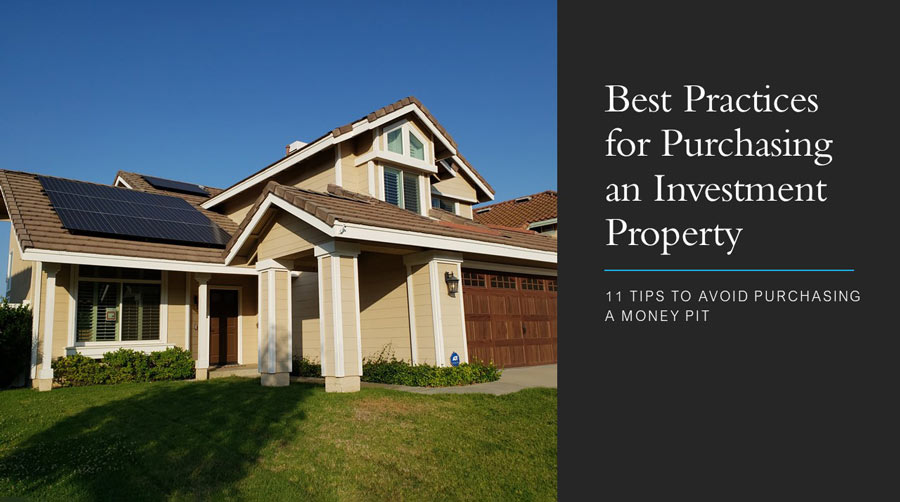
11 Best Practices for Purchasing an Income Property: Great Deals vs Money Pits
So, you’re looking for an income property, maybe your first rental, or adding to your holdings.
Good for you!
Not only can you make a monthly income on a rental, but you will also find, particularly right now, that the market is very much your friend.
Table of Contents
While you’re off living life, doing your thing, your rental income property is also out there doing its thing: accruing value.
The property market fluctuates
As you are aware, it isn’t 2008/2009 anymore. The market isn’t bottoming out, and great deals are much harder to find, now versus then.
However, that is not an entirely fair statement. In 2008/9 it was sort of like being an early gold rush prospector in 1849 at Sutter’s Mill, where just walking down the street one could almost pick up chunks of gold at random. And like gold, now one must work harder to find the deal, the rich vein, but they are most certainly out there.
Your goal ought to be not buying a lemon, a house that will sink you as fast as you can say, “money pit.”
Check out this great video:
How to avoid bad deals on income properties
Remember the old saying? If common sense is so common, why do so few people possess it? Well, common sense is your first defense.
I used to think about this quite a bit back when I performed broker and insurance inspections: How can a house, any house regardless of age, be left to deteriorate so very badly? And what does this do to the overall value?

Rule #1 - Follow the Rule of Cars
If a house looks like a pile of junk, it is a pile of junk. Why would you buy a 1963 VW Beetle rust bucket? You wouldn’t unless it’s a steal, and you know, going in, exactly what the problems are, the cost to fix, and what your risk tolerance is.
How much are you willing to put into it to make it nice again? If that amount is not enough to take it completely out of the “junk” column, move on. There are other deals.
Also, never, EVER waive the home inspection.
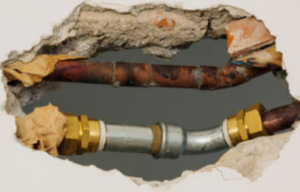
Rule #2 - Check the plumbing
Does the home have galvanized pipes?
Depending on the age of the home, you may be in danger of water leaks due to galvanized pipes. If the home has 40-year-old pipes, maybe you’re looking at a flip rather than a rental if you cannot tolerate the cost of re-piping.
Hey, it’s still an income property.
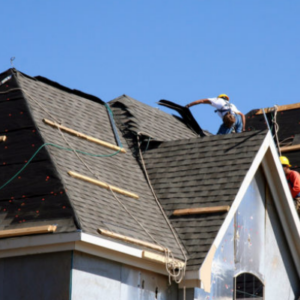
Rule #2 - Check the roof
Worn out roof? Or a shake/wood shingle roof?
Yikes! This can be a very expensive fix, and “half-waying” it really is a poor way to go. Sure, with asphalt, you can have 2, even 3 layers of roofing, saving you money, but in the long run, you’re penny-wise and pound foolish.
An additional layer of roofing atop an existing one is a band-aid at best and will wear faster. On a shake and wood shingle roof, replacing it is almost always the best answer, and know you are going to spend a lot to replace it.
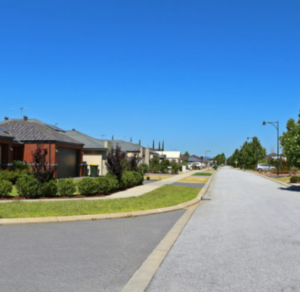
Rule #4 - Check the Neighborhood Out
Does it have nightmare neighbors?
Visit the potential income property in the early morning, mid-day, and at night, and I suggest several visits, weekdays and weekends.
I was lucky enough, years ago, to visit a house I really wanted only to find that on every Friday night the neighbor across the street had his buddies over for garage band practice. Had they been good, rather than just loud, maybe it wouldn’t have been a deal-breaker. But they were pretty bad. That and the right-side neighbor’s aggressive pit bull killed that deal. I realized I would either need a block between the properties or would have to commit to replacing the wood fence section regularly.
Your renter will likely have the same issues, and you will be paying for the fence and will suffer from the depressed market due to the bad neighbors.
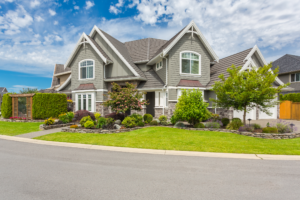
Rule #5 - Check out the curb appeal
What to look for outside? What sort of landscaping does it have? How’s the first impression?
This is maybe the easiest fix of all, but what you will see, others will see too. If the biggest problem with the property is a dead yard, hallelujah! That is an easy fix: seed and cover, and water the heck out of it, and boom, instant curb appeal.
Run the sprinklers; are there major issues there? If so, you will almost never run over $700 to straighten out a front yard. Remember, your first impression will be everybody’s first impression, or worse.
Palm trees need trimming. Just do it! That is an easy fix too!
Consider desertscape, it looks good, requires little care, but can be pricey.
Generally speaking though, a grass yard will give your property the needed warmth, adding curb appeal, and at a lower cost than just about any other groundcover.
Trim the shrubs, or remove them if they block the view of a front door.
Siding makes a big difference
“Siding? You mean, like, wood?”
Nope, I mean whatever covers the sides of the house. This is the second most important part of your investment’s envelope, which protects the interior from the elements. The first is the roof.
With stucco, small seismic cracks are not a big deal; however, chunks missing is. Look at it all!
Another thing that people never look for is sagging siding, be it wood, stucco, whatever. It can be hard to see, but sagging will almost always occur at the bottoms of exterior walls. Sagging stucco, which sort of looks like a full diaper, (that their wall is carrying a load!) doesn’t happen a lot, but if your potential income property has it, you probably have had an interior wall leak that was not addressed. The insulation has been saturated and settled at the bottom of the wall. You will have to address this, and it’s going to be fairly expensive, with opening the wall, re-stuccoing, paint, etc.
Wood rot on siding? Even if you have Masonite-type siding, you can have rot. Call it wood rot, weather rot, whatever, it will need addressing, and while it can be addressed in a cost-effective manner, it is still going to cost you money. Be aware that there are styles of Masonite that you just cannot get any more. In that case, think outside the box. Sometimes a creative fix can work wonders; more on that later.
House Color
What is your first impression when pulling up to the property? As I said above, that same emotion will be echoed by everyone who comes to see the house.
First, make sure that you are not hindered by HOA rules regarding colors, and if so, find out what those color rules entail.
Is the house blue or green? Plan on losing that paint! Blue, in particular, is liked by only about 5% of the population as a house color. Beige/brown is far and away more popular! This will help you when renting or flipping. Plan on spending about $1 a square foot of the house (and attached garage) into your rehab budget.
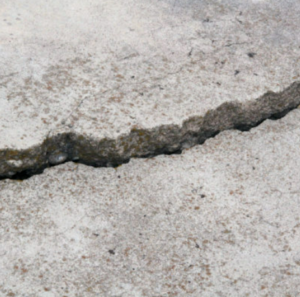
Rule #6 - Check out the walkways
Uneven walkways – Uneven walking surfaces
What? That’s a thing? Uneven walking surfaces? Yes, yes it is. This is a concern to you in two ways: Do you like getting sued because somebody fell? I didn’t think so.
But wait, there’s more.
Your insurance company knows this, and your premiums will rise.
The nomenclature of this item is:
- Minor concern
- Major concern (or Actionable)
Minor concern
A minor concern is concrete lifted less than 3 inches, (or an uneven walking surface of any kind, such as improperly installed pavers, uneven slabs) which can result in a trip and fall but is not so likely.
It is in the same risk category as having a fire pit in the backyard or missing a window screen. This usually also covers patio straps left behind from a past patio cover. These covers are usually removed because there was no permit pulled for them, but sometimes when pouring a rear patio slab the owner will have the foresight to have the straps put in then. This is detrimental when the posts are never installed, and someone trips and takes an eye out. You know, three straps can be cut and ground for about $150, isn’t that a small price to pay rather than losing everything you own?
Major concern
A major concern is concrete lifted greater than 3 inches, and is likely to result in a fall which will generate an injury, and/or a lawsuit. This is in the same risk category as one having a vicious pit bull in the backyard, or having an unfenced pool, or having 50-year-old galvanized piping, as viewed by an insurance underwriter.
One other thing I have seen in the past is the random pipe sticking out of the ground for no good reason. You can see it, you can avoid it, after all, at just a few inches in heath, it is visible, right? Not at night. It’s all fun and games until someone loses an eye. Yep, I’m back to the eye thing.

Rule#7 - Check the water heater
How old is the water heater?
If it’s older than 10 years, just replace it. Simple enough. “Maybe I can coax another 5 years out of it.” No, replace it and be done with it, you’ll be 10 years worry-free.
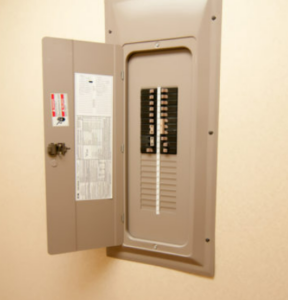
Rule #8 - Check the electrical panel
Is it old? Are the breakers cracked?
“Why would I do that?”
Well, regardless of an income property or your own personal dwelling, you may have a serious issue there.
Federal Republic Electric (FRE) Stablock panels are infamous for being fire hazards. Short story, they don’t always properly kick-off when the amperage rating is exceeded. This causes resistance in the home’s wire, which creates heat, which causes fires. Plan to replace this, and know you’re looking at a cost of about $3500 or more.
Another no-no panel has many names because they were bought out several times. Zinsco, Sylvania Zinsco, and GTE-Sylvania Zinsco are the trade names, and they have the same flaws as the FRE Stablock. Another downside to these is, you think you have the power off, start doing some work only to be electrocuted.
Final words on this: You may be surprised at how often I have opened an electrical panel to inspect it and found no backplate, or large gaps between the breakers. This is a huge hazard. Imagine this, little Billy comes along, sees these cool shiny copper wires, and touches them. No more little Billy.

Rule #9 - Look long and hard at the kitchen
Ugh, the kitchen is abominable
Ah, now we’re into the meat of the house, so to speak. The kitchen is vital when selling a house, often it’s what makes or breaks a sale. This can be to your advantage in negotiations; however, you will probably want to address it.
There is an upside here. A $20k renovation of a kitchen can increase the home’s value by $25 to $30k. Now the question is, how is the rest of the house and how is the rest of the renovation cost looking? There are a good many things you can do to spruce up a kitchen.
New stainless-steel appliances can make a big difference, at a cost of $2,000 or less.
If the counters are ugly, you can replace them, but if the cabinets are also ugly, do not put $2,000 worth of granite on those ugly old cabinets! You are defeating the purpose! You are far better off doing both; however, there are cost-effective solutions we utilize that take a kitchen from “ick” to “yessss.” Like...
Faux granite glaze
Say you have an 80’s era wood butcher block laminate counter. Nothing quite says “ick” than that. We have a method of transforming this material for about $650, and it looks so good, and so far, it’s proven to be pretty durable. On an income property (as in this case) simply spruce up the old cabinets, maybe paint or stain in and out, and use the granite glaze on the countertops. Below are actual photos, before and after.
Oh, and stainless steel sinks are WAY better for your property than porcelain. Porcelain will chip and wear, but stainless steel is nearly forever, and costs between about $250 and $400 installed, depending on whether or not tile work is needed.
Flooring
How’s that flooring look? Torn up, stained, burned? That’s not doing you any favors. If buying a distressed property, it is a sure-fire bet that if there is carpet, it needs replacing. You can view this expense as a downer or an opportunity. I recommend the latter.
However, the carpet may not be the best way to go this time. Depending on your finances and level of forward-thinking, you may mind a good laminate or tile, or mix is a better way to go.
A decent carpet with padding and the old stuff removed and hauled away, you ought to pay just over $16 a yard, or for comparison purposes, $1.80 a square foot.
For tile or laminate, expect about 3.2 times more. What do you get for that 3.2 times more? If renting out your income property (you know, for income) you stand a better chance of landing a good resident on your income property, one who will care for the home. If flipping, you stand a far better chance of selling it quickly and at the best price, depending on the entirety of the rehab.
Go to this page to check out some amazing remodels we manage.
Paint
What to look for inside:
- Poor patches and gouges
- Inconsistent texturing on the drywall
- Walls that are not straight and true
Poor patches and gouges partly have to do with your rehab expenses. You will need to have them redone, properly. Patching and texturing one large gouge can easily cost you $50, smaller ones $25 each.
Patches can also indicate plumbing issues addressed in the past. But were they repaired, right? And was water damage, such as the “M” word, addressed? Your home inspector, and possibly the seller, can help a lot on this.
Keep in mind this is an income property, so don’t go crazy on paint! For a rental, multiple wacky colors are unnecessary. Accent walls are not necessary. Keep it simple, and neutral, and use semi-gloss paint, which will make the walls washable.
Flat paint: completely forget it exists, except for ceilings. If flipping a property, then yes, you may go wild, but still, keep it neutral.
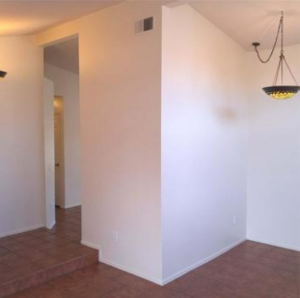
Rule #10 - Inspect the interior footprint
Interior changes
Does your income property flow? Maybe removing a wall will help if it does not. Maybe a cutout in a wall makes it flow. Don’t fear thinking outside the box, it’s fun there, I promise!
The light fixtures: are they holdovers from the big-haired rock band days? Replacement fixtures in halls, baths, and kitchens are not as expensive as you may think. Expect under $100 each.
Do the toilets flush properly? Are the tubs and sinks attractive? How about the fixtures in the baths and kitchen? These cost so little and bring great value back to you.

Rule #11 - Know your costs
Realtor Costs
This is largely overlooked, and if you’re buying, it’s not so relevant. But if you’re selling, it can equate to a fair chunk of change. You can hire one of those Help U Sell firms, which will cost you about 3% or so, but you will be doing most of the work yourself. You can hire a realtor and pay 5% to 6%, again, a good chunk of change. Or we at Management One can recommend a realtor who will save you quite a bit, still, give you A+ service, and has a cadre of investors always looking for buys.
At the end of the day
Nothing in this world is worth any more than one is willing to pay for it. Bear this in mind throughout, but with the goal of maximizing your earnings. Before you buy your rental property, see how much it will rent for to maximize your return on your investment. We are happy to provide a FREE Rental Analysis to you whether you use our services or not.











